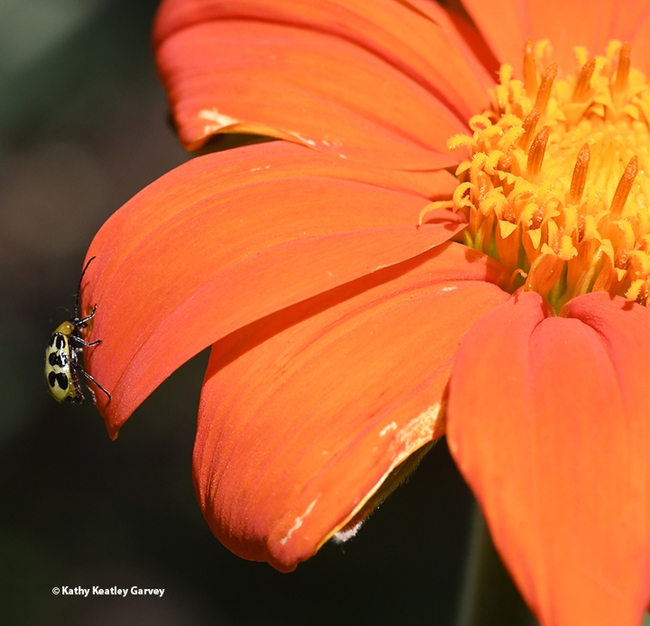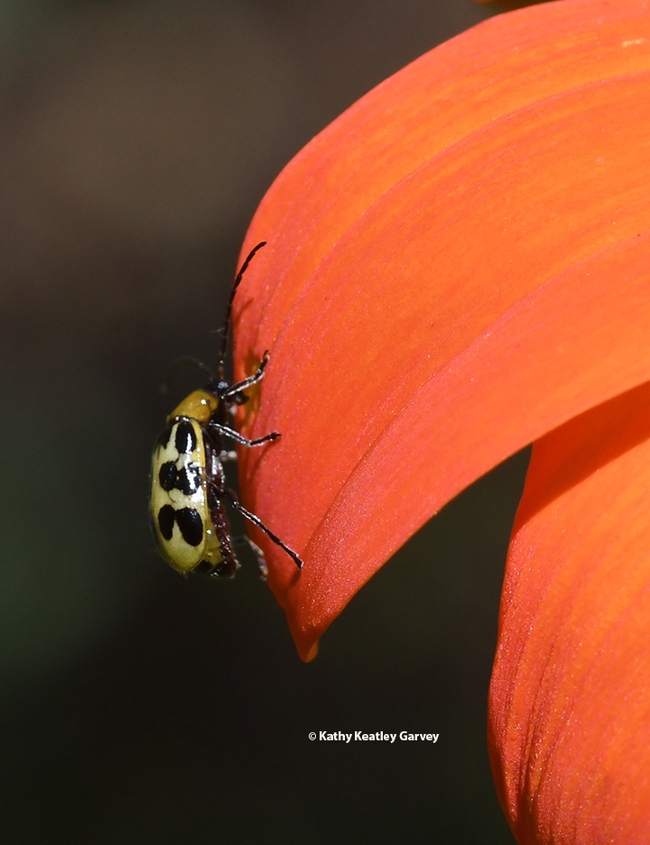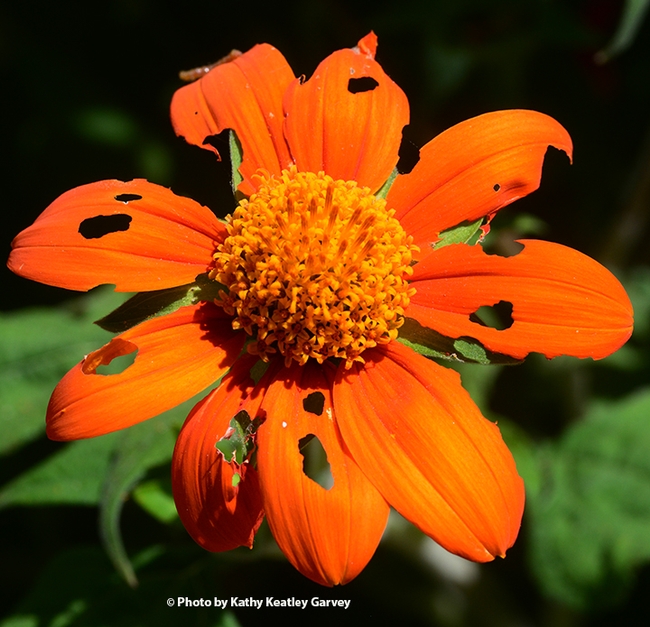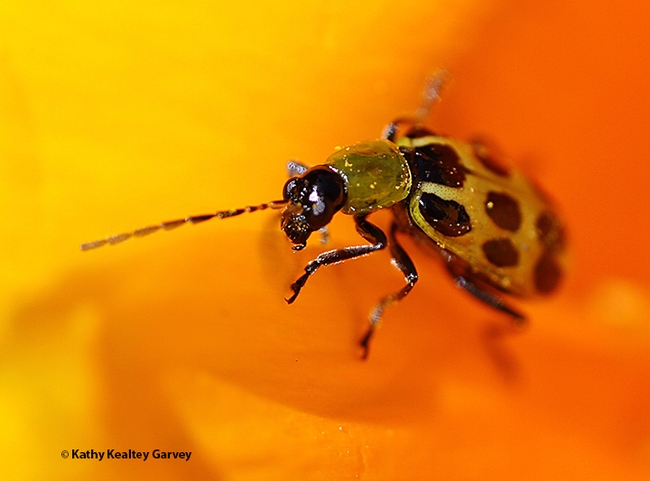Western spotted cucumber beetles know how to hit the spot.
Make that "multiple spots."
These beetles, Diabrotica undecimpunctata, are agricultural pests that feed on roots, seedlings, flowers and foliage. And they can transmit diseases.
But have you ever seen feed on flower petals when you're wandering around in your garden?
"Cucumber, flea, and leaf beetles are pests of many flowers, including dahlia, lily, and sunflower," according to the UC Statewide Integrated Pest Management (UC IPM) Program. "Adult cucumber beetles are shiny with black heads, long antennae, and about 0.25 inch long. Larvae are whitish and slender with three pairs of short legs; the head and tip of the abdomen are darker. Adults may be striped or spotted, depending upon species. Flea beetles are small, shiny beetles with black legs enlarged for jumping. Other leaf beetle adults are long, oval, blunt, and have threadlike antennae. The blue milkweed beetle adult is metallic green-blue."
"Adult beetles chew holes in leaves; some species also consume shoots and blossoms. Larvae of cucumber beetles and flea beetles chew roots, which can stunt crops. Seedlings can be destroyed within a few days. Older plants can tolerate relatively large numbers."
In our pollinator garden, spotted cucumber beetles are extraordinarily fond of our Mexican sunflowers, Tithonia rotundifola. We've seen them chew multiple holes in the petals.
Caught in the act!
Attached Images:

Wide angle shot of a western spotted cucumber beetle, Diabrotica undecimpunctata, chewing a hole in a petal of a Mexican sunflower, Tithonia rotundifola. (Photo by Kathy Keatley Garvey)

Close-up of a western spotted cucumber beetle chewing a hole in a Mexican sunflower. (Photo by Kathy Keatley Garvey)

The end result: a Mexican sunflower you wouldn't want to enter in a county fair. (Photo by Kathy Keatley Garvey)

Close-up of a western spotted cucumber beetle. (Photo by Kathy Keatley Garvey)